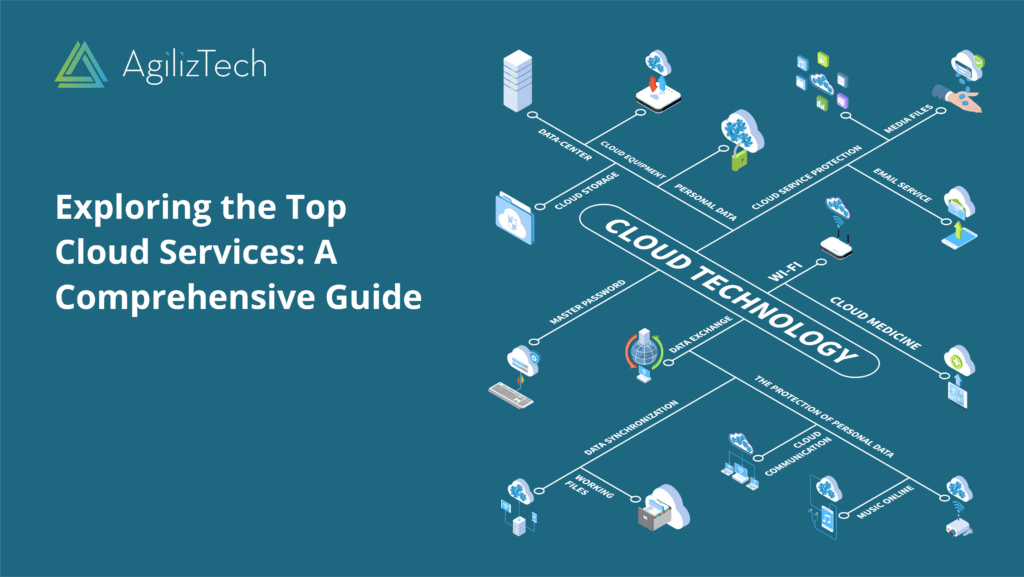
Exploring the Top Cloud Services Questions: A Comprehensive Guide
In this article, we will look at Comprehensive guide to Exploring the Top Cloud Services.
As organizations continue to adopt cloud services to improve efficiency, reduce costs, and increase agility, it’s important to have a clear understanding of the key questions that arise in cloud services. This comprehensive guide will answer some of the most frequently asked questions about cloud services, helping organizations to make informed decisions and get the most out of their cloud investment.
1. What are the most important factors to consider when selecting a cloud provider?
When selecting a cloud provider, organizations must consider factors such as security, compliance, cost, scalability, and support. It’s also important to evaluate the provider’s track record, reputation, and ability to meet the organization’s specific needs.
2. How can organizations ensure that their data is secure in the cloud?
Organizations can ensure that their data is secure in the cloud by implementing security best practices, such as encryption, authentication, and access controls. They should also conduct regular security assessments, and have an incident response plan in place to quickly address any security breaches or threats.
3. How can organizations prepare for and respond to outages and other disruptions in the cloud?
Organizations can prepare for outages and other disruptions by implementing disaster recovery and business continuity plans, and by regularly testing these plans. They should also have a response plan in place, which includes clear roles and responsibilities and communication protocols.
4. What are the challenges and opportunities of the multi-cloud strategies?
Multi-cloud strategies provide organizations with more flexibility, but also increase complexity. Organizations must be able to effectively manage and integrate multiple cloud environments, and ensure that data is properly secured and compliant.
5. How can businesses measure the ROI of cloud adoption?
Businesses can measure the ROI of cloud adoption by tracking metrics such as cost savings, revenue growth, operational efficiency, and compliance. They should also evaluate the impact on customer satisfaction, employee productivity, and time-to-market.
6. How can organizations create a culture of innovation and experimentation within the cloud services?
Organizations can create a culture of innovation and experimentation within the cloud services by encouraging employee innovation, fostering collaboration, embracing failure, leveraging data, encouraging continuous learning, and providing autonomy.
7. How does the emergence of edge computing change the way we use cloud services?
Edge computing allows for data processing and storage to occur at the edge of a network , closer to the source of the data. This is in contrast to traditional cloud computing, which relies on centralized data centers. The emergence of edge computing is changing the way we use cloud services by offering a number of new opportunities such as low latency, improved security, and cost savings, but also come with their own set of challenges such as network complexity, data management, and scalability. Organizations must carefully consider the challenges and opportunities of edge computing and develop a clear plan to manage and integrate edge devices and data centers to ensure that their edge computing strategy is successful.
8. How can organizations effectively balance the need for security and compliance with the agility and scalability offered by the cloud?
Organizations can effectively balance the need for security and compliance with the agility and scalability offered by the cloud by implementing security best practices, conducting regular security assessments, and having an incident response plan in place. They should also establish clear policies and procedures to ensure compliance with relevant regulations and standards.
9. How can organizations effectively manage and monitor their cloud environment to ensure that they are getting the most out of their cloud investment?
Organizations can effectively manage and monitor their cloud environment by using cloud management tools, monitoring cloud resources, identifying performance bottlenecks, troubleshoot issues, implementing automation, and regularly reviewing and optimizing the cloud environment.
10. How can organizations keep up with the constantly evolving cloud services?
Organizations can keep up with the constantly evolving cloud services by staying informed, using a cloud management platform, embracing automation, building a strong cloud team, adopting a continual learning mindset, and working with a trusted partner. By taking these steps, organizations can take advantage of new benefits and capabilities as they become available, and ensure that they are able to effectively leverage the power of the cloud.
In conclusion, this comprehensive guide has answered some of the most frequently asked questions about cloud services. By understanding the key considerations and best practices in cloud services, organizations can make informed decisions and get the most out of their cloud investment.


